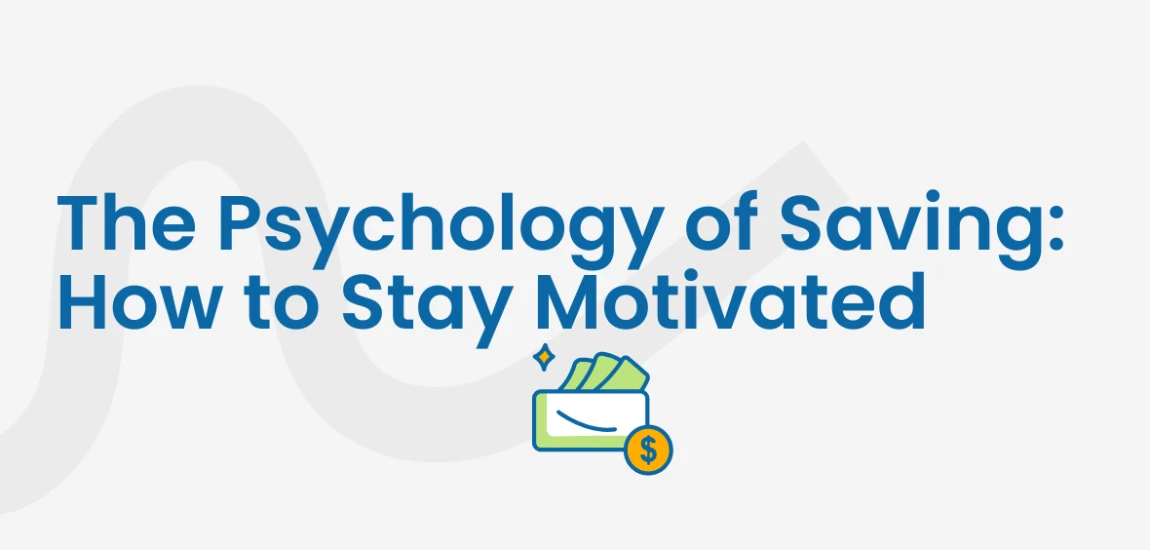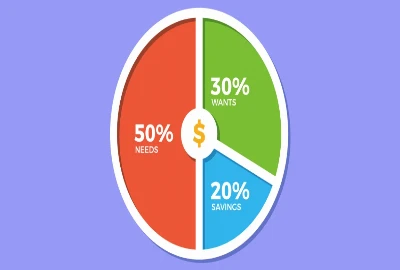The Psychology of Saving: How to Stay Motivated

Saving money is more than just a numbers game. It's an emotional and psychological journey that reflects how we view ourselves, our future, and the world around us. From childhood lessons about money to cultural influences and personal experiences, the way we save is shaped by much more than logic and spreadsheets.
Many people set savings goals with enthusiasm, but soon find themselves struggling to follow through. A lack of motivation, discipline, or emotional connection to the goal often leads to abandonment. This is because traditional financial advice often overlooks the internal mindset and habits that play a huge role in our money behavior.
This is where the psychology of saving comes in. By recognizing the mental blocks that sabotage our efforts—and learning how to work with our brain instead of against it—we can begin to reshape our relationship with money. Whether you're saving for security, freedom, or a specific dream, understanding your financial behavior is the first step to lasting success.
In this blog, we’ll explore the psychological reasons why saving is difficult, and offer practical, science-backed tips to help you stay motivated, consistent, and confident on your savings journey.
Why Saving Is So Hard: A Behavioral Insight
Despite good intentions, many people find it difficult to save. Behavioral psychology suggests that our brains are wired to prioritize immediate rewards over future gains. This is known as present bias. It explains why spending money on something fun today feels more satisfying than setting it aside for a goal months or years down the line.
Another factor is decision fatigue. Constantly making financial choices can be mentally draining, leading to poor spending decisions or the abandonment of savings plans altogether. Furthermore, the lack of immediate feedback from saving makes it less gratifying compared to spending, which offers instant satisfaction.
Additionally, many people face financial anxiety and low self-efficacy. They might believe that saving is impossible due to their income or previous failures. This mindset becomes a self-fulfilling prophecy, where the belief that saving is too hard prevents people from even trying. Understanding these psychological tendencies helps you recognize that difficulty saving is not due to weakness or laziness—it's human nature. However, there are ways to work with your brain, not against it.
Tip 1: Set Clear, Emotional Goals
Setting a clear savings goal is the starting point, but what makes that goal powerful is the emotion attached to it. When your goal connects with something deeply personal—like freedom from debt, the ability to travel, or security for your family—it becomes more than just a number. This emotional connection taps into intrinsic motivation, making the habit of saving feel rewarding rather than restrictive.
Studies in behavioral psychology show that people are far more likely to follow through on plans when they align with personal values. Ask yourself what you truly want. Is it peace of mind, adventure, independence, or the ability to provide for loved ones? Frame your savings goal in those terms. Instead of “save $1,000,” try “build a $1,000 safety net so I can feel secure no matter what.”
Another powerful strategy is visualization. Picture what your life will look like once you reach your goal. What will you feel? What will change? Keep this vision vivid—on a vision board, journal entry, or even a screensaver. The brain responds well to imagery, and this exercise helps wire your mind to treat saving as a step toward a meaningful outcome, not a sacrifice.
You can also reinforce your goal by breaking it into emotional milestones. For example, every time you save $100 toward your travel fund, write a small letter to your future self about the experience you’re creating. These emotional touchpoints build anticipation and keep you motivated for the long run.
By grounding your savings goal in real emotion, your motivation becomes more sustainable. You aren’t just saving money—you’re investing in a life that feels fulfilling and aligned with your dreams.
Tip 2: Make Saving Automatic
Making saving automatic is like putting your financial future on autopilot. It removes willpower from the equation and helps you bypass the internal resistance that often blocks consistent saving. Once you've automated your savings, you're no longer relying on daily discipline. Instead, saving becomes a seamless part of your financial life—something that happens in the background while you focus on living.
You can take this further by aligning automation with your pay schedule. For instance, if you're paid bi-weekly, set up two automatic transfers per month so the savings are spread out and feel less overwhelming. Some banks even allow you to round up purchases and deposit the difference into a savings account—a technique that builds your savings gradually with minimal effort.
Also, consider using a high-yield savings account so your money grows over time. Earning interest, even a small amount, reinforces the value of saving. You can also use budgeting apps that automate savings based on your spending habits, such as saving a percentage of any money you didn’t spend from your monthly budget.
By automating not only how much but also how often and where you save, you're reducing the friction that often leads to financial backsliding. Consistency is key in saving—and automation ensures you never miss a step, even when life gets busy.
Tip 3: Reward Progress Along the Way
It’s important to remember that saving is a long-term commitment, and without small, consistent reinforcements, even the best-intentioned savers can burn out. Creating a reward system that celebrates financial wins helps the brain create positive associations with delayed gratification.
Break down your major savings goal into clear, manageable checkpoints—like saving the first $100, $500, or 10% of your target. At each milestone, plan a small, guilt-free reward that brings you joy but doesn’t undo your progress. This could be a favorite snack, a solo coffee outing, or even watching a movie you’ve been looking forward to.
To amplify this method, document your rewards and experiences in a savings journal. This builds momentum and turns your journey into a story of success you can look back on. Every page becomes proof of your ability to commit, progress, and achieve.
Finally, sharing your milestones with supportive friends or communities can provide social reinforcement. Being congratulated on progress—even in small increments—helps you stay committed and motivated.
Tip 4: Use Mental Accounting to Your Advantage
Mental accounting can be a double-edged sword—it’s often the reason we overspend holiday bonuses but hesitate to touch our emergency fund. But when used strategically, it can become a powerful behavioral savings tool.
Separate your accounts based on specific goals to help your brain assign value and meaning to each fund. For example, a dedicated 'Home Deposit' account feels more sacred than a generic savings pot. You’re less likely to dip into it casually when it’s linked to something important.
To reinforce the effect, visualize each goal. You might set themed alerts on your phone, create digital wallpapers, or add photos to your budgeting app. These cues maintain an emotional connection between your current actions and your future goals.
Lastly, consider combining mental accounting with automation. Set scheduled transfers to each account from your paycheck or primary account. This system turns your mind’s natural compartmentalization into a strength instead of a barrier.
Tip 5: Track Progress and Make It Visible
Visibility is a powerful motivator. When progress is out of sight, it’s also out of mind. Creating ways to visualize your savings helps build momentum. Apps like YNAB, Mint, and Goodbudget allow you to track each dollar saved in real time. For physical reinforcement, try a printable savings thermometer or sticker chart.
Behavioral science shows that humans are goal-driven creatures. The more you see progress, the more likely you are to stay engaged. This is the "goal gradient effect," where effort accelerates as we approach a finish line. Capitalize on this by placing your trackers somewhere you’ll see them daily—like your mirror, fridge, or phone home screen.
If you’re working toward multiple goals, try stacking visuals side by side so you can evaluate progress across the board. This builds confidence and reinforces your identity as someone who can save consistently. When you see savings as an evolving, visual process—not just a static bank number—you stay more emotionally involved.
Tip 6: Avoid Comparison and Stay Focused on Your Why
Comparison is the thief of financial peace. Constant exposure to others' seemingly perfect lifestyles—especially through social media—can distort your financial reality and create stress or shame. This often leads to impulsive decisions or abandonment of well-crafted savings plans.
Instead, make your financial journey personal and private. Write a statement about why you’re saving and what it means for your future. Post it somewhere visible or keep it in your journal as a private motivator. Revisit it often, especially when doubt or envy creep in.
Celebrate quiet wins that matter to you. Maybe it’s going a full month without ordering takeout, or resisting an unnecessary online purchase. These wins build emotional resilience and financial discipline.
You can also curate your digital environment to reduce comparison pressure. Follow creators and influencers who promote mindful money habits instead of consumerism. Focus on inspiration over aspiration.
Tip 7: Create a Savings Routine
A savings routine transforms money management from a stressful task into a familiar habit. Start with regular financial check-ins—weekly or bi-weekly—where you track your budget, update your goals, and reflect on challenges. These sessions build financial mindfulness and reduce avoidance.
Incorporate rituals. On payday, pour a cup of tea, sit down with your budgeting app, and transfer money into your savings buckets. These small, repeated actions signal to your brain that saving is a normal, expected part of life—not an exception.
Anchor your routine to something enjoyable. For example, review your progress while listening to your favorite music or after journaling. When saving is paired with a positive emotion, your brain builds a stronger connection.
Long-term consistency matters more than perfection. Missed a week? Just restart. Over time, a solid routine creates the discipline, confidence, and clarity needed for sustainable saving.
The Mind Behind the Money
Saving money is as much about mindset as it is about math. By understanding the psychology of saving, you can build habits that feel natural and motivating instead of restrictive. Start with clear goals, automate your process, track your progress, and celebrate small wins. Over time, these practices can transform how you relate to money and help you create a stronger, more stable financial future.
The journey to saving success starts with understanding your behavior. Once you learn how to outsmart the mental blocks that hold you back, saving becomes less of a struggle and more of a lifestyle choice. With the right strategies and mindset, long-term financial goals are not only possible—they become enjoyable to achieve.



